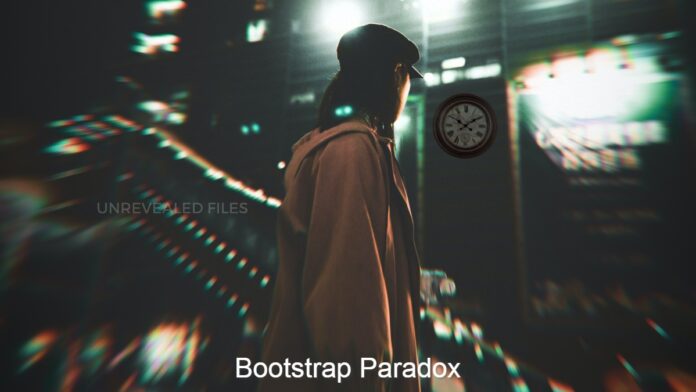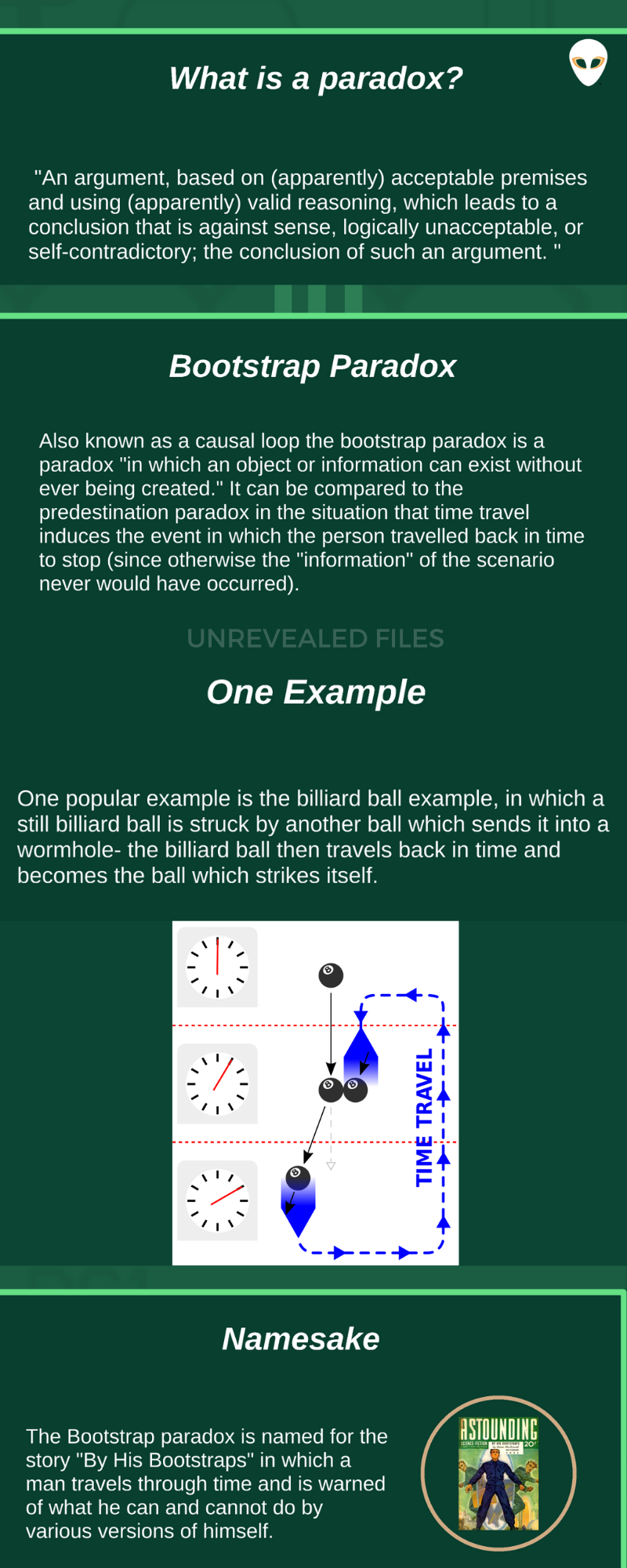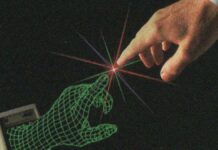Imagine you have several questions about the theory of relativity, you have tried a lot, but you are not getting the relevant answers. So you think, how nice it would be if I could travel back in time and ask Albert Einstein. So opportunity, you develop a time machine and travel back in time with Einstein’s theory of relativity research papers and books.
But when you reach out to Einstein and ask him your questions about the theory of relativity, he tells you that he doesn’t know anything about relativity; he also says he never published any research papers. He is a farmer, not a scientist. By knowing these things in Einstein’s own words, you are shocked. You tried to make Einstein understand and asked, “Where did the theory originate?” but never understood. In disappointment and anger, you left all the research papers and books with Einstein, keeping in mind that one day he will understand, and then you travel back to your own Time (present Time).
Over the coming decades, Einstein claimed the theory of relativity as his work and published it. Then, in the present time, a copy of it reaches your hands, and you again take it back to Einstein with the same question “Where did the theory originate?”
Here we cannot say that it came from you(the time traveler) as you have learned it from Einstein’s relativity research papers and books; we also cannot say that it is the original work of Einstein since you taught him (the time traveler) and then, Einstein claimed it as his discovery. So, in this case, you can not say who discovered the theory of relativity or where the idea of the Bootstrap Paradox originated? a theoretical paradox of time travel.
Contents
What is the Bootstrap Paradox?
Traveling back in time would allow for causal loops involving events, information, people, or objects whose histories form a closed loop and thus seem to arrive or emerge unexpectedly. However, the notion of objects or information that is “self-existing” in this way is often viewed as paradoxical, with several authors referring to a causal loop involving information or objects without origin as a Bootstrap paradox, an information paradox, or an ontological paradox (Ontology is the branch of metaphysics dealing with the study of being and existence).
The term time loop is sometimes referred to as a causal loop, but although they appear similar, causal loops are unchanging and self-originating, whereas time loops are constantly resetting. Bootstrap Paradox is also known as a causal loop, an information paradox, or an ontological paradox.
Thus, the Bootstrap paradox is “in which an object or information can exist without ever being created.” It can be compared to the predestination paradox in the situation that time travel induces the event in which the person traveled back in time to stop any event or start or reset any event (since otherwise, the “information” of the scenario never would have occurred).
In other words, The Bootstrap Paradox is a theoretical paradox of time travel that happens when an object or part of the information sent back in Time becomes trapped within an endless cause-effect loop in which the thing or part of the data no longer has an observable point of origin, and is said to be uncaused or self-originated.
Visual Info-graphic Explanation of Bootstrap Paradox
The term “Bootstrap.”
The term or the meaning “Bootstrap” in this context refers to the expression “pulling yourself up by your bootstraps” or “pulling oneself over a fence by one’s bootstraps”; it seems an impossible task. The first reference to this impossible task is widely believed to originate from an 18th-century literary classic, The Surprising Adventures of Baron Munchhausen, in which the eponymous hero is stuck in a swamp and manages to escape by pulling upwards on his hair.
Later the term “bootstrap paradox” became popular when science fiction writer Robert A. Heinlein wrote a book, By His Bootstraps (1941). In his book, Heinlein tells the story of Bob Wilson and the Time travel paradoxes he encounters after using a time gateway. In the story, Wilson travels to the future, where his future self gives him a notebook before traveling to an earlier point and using the book’s helpful information to set himself up as a benevolent dictator. After the notebook becomes old, Wilson copies the data into a new laptop and disposes of the original. He later thinks there never were two notebooks and that the newly created one was given to him in the far future. So who wrote the book, and where did its information originate?
Obstacles in Bootstrap Paradox
By our linear view of Time, and according to the above example, the future event has already occurred as you cause the past to influence the future. This is entirely inconsistent; similarly, the idea of free will is significantly affected. Indeed, the bootstrap paradox indicates that everything is predestined because the past depends on the future, which is terrifying.
According to Einstein’s Theory of General Relativity, we have nearly perfect freedom of movement into the future, but Time travel to the past creates many paradoxes. Even though his equations state that four-dimensional space-time may be twisted into any shape and that space-time loops are feasible. Thus theoretical physicists have great interest in any time travel that emerges paradoxes. This interest has led them to believe that Time travel to the past is impossible. Below are some examples of how the bootstrap paradox violates the second law of thermodynamics:
Law of Entropy
The bootstrap paradox violates the second rule of thermodynamics as the entropy of isolated systems would either remain constant or rise, but it cannot decrease. In other words, systems constantly go from a state of order to disorder. Therefore, the item’s status or information moving back and forth should degrade if the law is followed.
Although we may suppose a reverse thermodynamic process in which the condition of the information is restored when traveling back and declines when traveling ahead, we cannot identify a clear genesis for the thing to begin with. As a result, predicting where a piece of information or an item originates from and how it will evolve is challenging.
This would imply that an item or information locked within a time loop would age and finally decay. You can understand this with the watch in Somewhere In Time movie, which one would have anticipated to become older as the cycle went on. Through such instances, the object cannot be the same as the one sent back in Time, resulting in a contradiction and the possibility of a riddle as well as the question of identity, as Theseus’ paradox says.
Furthermore, the watch eventually wearing out would mark a break in the plot since Jane Seymour would never have gotten it as a young lady, and the time loop would never have begun.
Law of Causality
While a bootstrap paradox may result in a readable explanation of the timeline’s past, one issue linked with this ontological quandary is an apparent violation of the Law of Causality. As a result, scientists face an evident problem: they can no longer claim that a previous cause leads to a future event. After all, the event may have occurred in the future before causing the reason in the past.
This implies that rather than Time advancing from the past to an unknown future, the past, present, and future are all equally real at the exact moment. As a result, the challenge of determining the “origin” of anything, a phrase generally linked with the past, has become meaningless. Learn more about Causality in this article – Causal loop
Possible Solutions to the Bootstrap Paradox
The notion of a multiverse is a well-considered answer to the bootstrap dilemma. A time traveler entering a replica of the planet he left enters a world similar to when they arrived, allowing them to influence the future as it is not preset freely. Furthermore, the time traveler’s activities will not affect the actual reality.
The “Somewhere In Time” scenario, based on the premise of an “immutable” chronology in which the circle of events is similar every Time, poses the issue of a progressively aged pocket watch. One approach may be to presume that time travel reverses entropy, but this would also imply that the stuff that composed Reeve himself would have been restored to its 1912 condition when he returned to the past, which would not be in the form of Reeve.
According to Russian researcher Novikov, the second rule of thermodynamics is regarded to be a statistical law rather than an absolute one, making spontaneous entropy reversals or failure to rise unlikely but not impossible. Furthermore, the second rule of thermodynamics only applies to a system that is isolated from the outside world, and as Novikov reasons:
“In the case of macroscopic items, such as the watch, whose worldlines form closed loops, the outside world can waste energy to repair wear/entropy that the object accumulates during its history, such that when it closes the loop, it is back in its original state.”
Otherwise, it would be interesting to investigate the idea that the time-traveling watch would have to obey the timeline protection theory, which claims that any attempt to produce a paradox would fail to owe to the creation of a probability distortion. Consider a young Jane Seymour growing enraged and hurling the watch toward the wall. The wall may be slightly damaged, but the look must stay in the same condition. Probability would bend to prevent any damage to the watch from occurring, which may lead to some extraordinary results. Nonetheless, the universe must favor an unlikely event occurring to avoid an impossible one from happening.
The last option is that a time scale will find himself in a parallel reality or multiverse each Time he travels to the past, altering nothing about his original timeline.
Cases of Bootstrap Paradox
Information
A time traveler teaching Einstein the theory of relativity before returning to his own Time would be an example of a bootstrap paradox involving information. Einstein maintains it’s his work, and over the next few decades, the theory was published countless times until a copy winded itself in the hands of the original time traveler, who then returned it to Einstein, asking the question, “Where did the theory written in the notebook come from?” We cannot claim that it came from the time traveler as he learned it from Einstein, but we also cannot say that Einstein wrote it as he knew it from the book given by the time traveler. So who invented the theory of relativity? It will remain a question.
The fiction Doctor Who episode “Blink” depicts an information paradox in which a video message develops an infinite loop that spans 38 years. Similarly, a clever paradox story using Beethoven’s music can be found in the two-part Doctor Who episodes “Under the Lake” and “Before the Flood.” Another example of a plot full of bootstrapped contrasts is the 2014 film “Time Lapse,” in which the main characters respond to photographs every day for 24 hours in the future.
Object
A bootstrap paradox involving an object, in this case, a pocket watch, is depicted in “Somewhere in Time (1980) movie”. In 1972, Christopher Reeve was handed a look by an older woman, which he later discovers was given to her younger self by Reeve after traveling back in Time to 1912. The young lady then completes the infinite cycle by handing the watch to Reeve when she was older in 1972. A further discrepancy is how the pocket watch survives numerous processes while unaged and untouched by Time. The difficulty is heightened when information is locked within a bootstrap paradox. Both appear to violate Thermodynamics’ second law, as discussed above.
In Terminator Genisys, Skynet is an example of a bootstrap paradox involving an item in the Terminator films. Skynet, humanity’s enemy, could not have been created without the remnants of the T-800 robotic entity sent back in time to stop John Connor. The technology was studied, and Skynet and cyborgs were produced as a result of reverse engineering.
Person
The most extreme example of a bootstrap paradox involving a human is in Robert A. Heinlein’s 1959 short story “All You Zombies,” which inspired the 2014 film “Predestination.” In this film, the main character, an intersex guy born as a girl, is duped into traveling back in Time and impregnating his pre-gender reassignment female self, who then gives birth to themself. As a result, he transforms into a self-created creature that is both his mother and father. This inevitably creates a mind-boggling chicken-and-egg quandary. However, the tale seems self-consistent, with no changes occurring throughout the loop. However, Heinlein does not attempt to answer the question of what role “free will” plays in this hypothetical situation.
Another noteworthy example of a person-centric bootstrap paradox in fiction is the Futurama episode “Roswell That Ends Well,” in which Fry becomes his grandpa, as do the Terminator films, with a future John Connor sending Kyle Reese back in Time to impregnate Sarah Connor, who subsequently bears John Connor.
Self-Consistent with Timeline
Consistency paradoxes, such as the Grandfather Paradox, the Hitler Paradox, and Polchinski’s Paradox, provide a self-consistent solution to the timeline’s past. For example, eventually, if a time traveler murdered his grandpa, he would never have been born and hence would not have been able to return in time to murder his grandfather. This would be a contradiction.
In contrast, the Predestination Paradox and the Bootstrap Paradox are closed loops in Time in which “cause and effect” repeat in a circular pattern, culminating in a self-created creature with no point origin. Despite being an anomaly and appearing to contradict our notion of causation, this self-caused event, like the Big Bang, does not appear impossible. It also does not suggest any discrepancy in the timeline’s history. In reality, all of the events in the time loop are “fixed” and occur on a single, unchanging timeline.
Video Explanation of Bootstrap Paradox
Conclusion
To summarise, all of these scenarios are purely hypothetical. However, there are many more paradoxes connected to Time travel in physics. For example, in the grandfather paradox, a logical dilemma asserts that if you travel back in Time, you may kill your grandpa, generating difficulty in your ancestry and your existence. These paradoxes, many of which seem absurd, lead experts such as Stephen Hawking to believe that Time travel is impossible.
We know that Time is the indefinite continued progress of existence and events that occur in seemingly irreversible succession from the past, through the present, into the future. It is a component quantity of various measurements used to sequence events, compare the duration of events or the intervals between them, and quantify rates of change of quantities in material reality or the conscious experience.
We also know that yesterday, today, and tomorrow are consecutive and flow uni-directionally still; we always fantasize about Time traveling. Of course, time-traveling is still an imaginary and theoretical concept, but it brings along many paradoxes like the Grandfather Paradox, the Fermi Paradox, the Bootstrap Paradox, the Causal Loop, and more; these paradoxes may alter the whole vision of the world we live in. So, if one day we can travel time, then What? Think of it…
Sources
- Holmes, Jonathan (October 10, 2015). “Doctor Who: what is the Bootstrap Paradox?”. Radio Times. Accessed on August 05, 2020.
- Visser, Matt (1996).Lorentzian Wormholes: From Einstein to Hawking. New York: Springer-Verlag. p. 213.ISBN1-56396-653-0.” The second class of logical paradoxes associated with time travel is the bootstrap paradoxes related to information (or objects, or even people?) being created from nothing.”
- Smith, Nicholas J.J. (2013). “Time Travel.” Stanford Encyclopedia of Philosophy. Accessed on August 05, 2020.
- Lobo, Francisco (2003). “Time, Closed Timelike Curves and Causality.” The Nature of Time: Geometry, Physics, and Perception. NATO Science Series II. 95. pp. 289–296. arXiv:gr-QC/0206078. Bibcode:2003ntgp.conf..289L. ISBN 1-4020-1200-4.
- Rea, Michael (2014). Metaphysics: The Basics (1. publ. ed.). New York: Routledge. p. 78. ISBN 978-0-415-57441-9.
- Rea, Michael C. (2009). Arguing about Metaphysics. New York [u.a.]: Routledge. p. 204. ISBN 978-0-415-95826-4.
- Thorne, Kip S. (1994). Black Holes and Time Warps. W. W. Norton. pp. 509–513. ISBN 0-393-31276-3.
- Everett, Allen; Roman, Thomas (2012). Time Travel and Warp Drives. Chicago: University of Chicago Press. pp. 136–139. ISBN 978-0-226-22498-5.
- Klosterman, Chuck (2009). Eating the Dinosaur (1st Scribner hardcover ed.). New York: Scribner. pp. 60–62. ISBN 9781439168486.
- Toomey, David (2012). The New Time Travelers. New York, New York: W. W. Norton & Company. ISBN 978-0-393-06013-3.
- Smeenk, Chris; Wüthrich, Christian (2011), “Time Travel and Time Machines”, in Callender, Craig (ed.), The Oxford Handbook of Philosophy of Time, Oxford University Press, p. 581, ISBN 978-0-19-929820-4.
- Ross, Kelley L. (1997). “Time Travel Paradoxes”. Archived from the original on January 18, 1998.
- Jones, Matthew; Ormrod, Joan (2015). Time Travel in Popular Media. McFarland & Company. p. 207. ISBN 9780786478071.
FACT CHECK: We strive for accuracy and fairness. But if you see something that doesn’t look right, please Contact us.
DISCLOSURE: This Article may contain affiliate links and Sponsored ads, to know more please read our Privacy Policy.
Stay Updated: Follow our WhatsApp Channel and Telegram Channel.













Hi I am so excited I found your blog, I really found you by error, while I was searching on Google for something else, Regardless I am here now and would just like to say thanks a lot for a remarkable post and a all round entertaining blog (I also love the theme/design), I don’t have time to go through it all at the minute but I have bookmarked it and also included your RSS feeds, so when I have time I will be back to read a great deal more, Please do keep up the excellent job. sheffieldstateuniversity.com
Wow
Best view I have ever seen!
Hello, guys! I have really enjoyed the infromation above and after this i hope that you will visit my link writingservice-us.com right here.
Best view i have ever seen !
Awesome,
It’s mind bending Paradox
Hello, thank you for your appreciation! Please like and share this story with your friends.